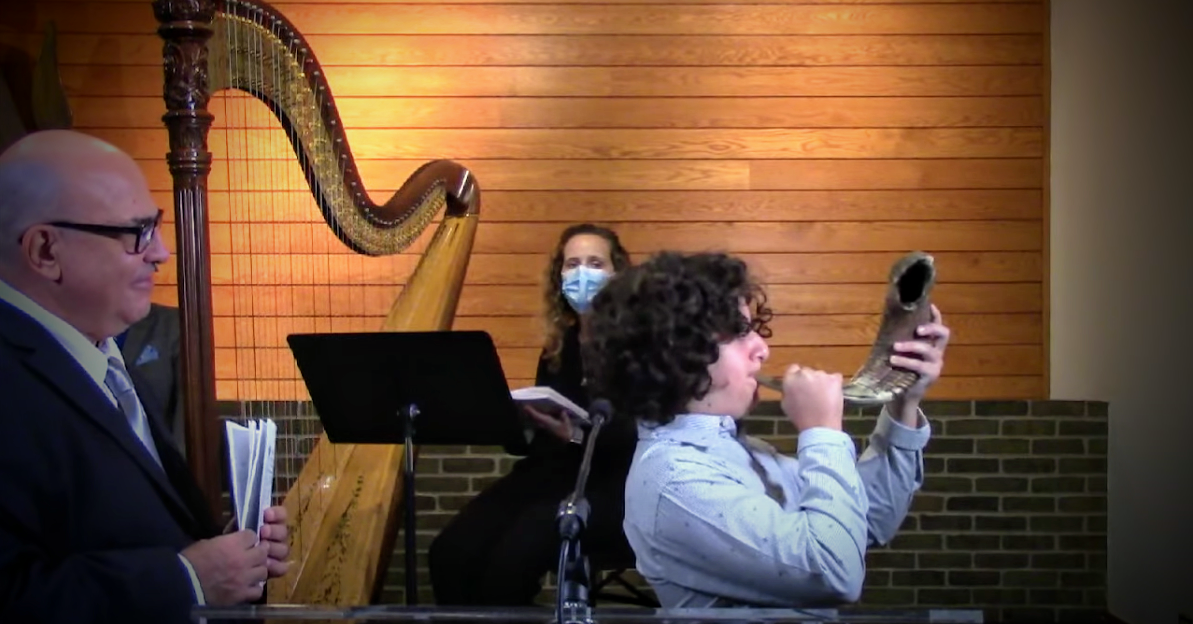It was without a doubt the most surreal High Holidays experience in my 45-plus years of membership at the Congregation for Humanistic Judaism (the new name for The Birmingham Temple, which has been situated ironically in Farmington Hills since the early 1970s).
There were five online services. As “readers” for the two Rosh Hashanah and two Yom Kippur services, my wife and I were fortunate enough to be, as Hamilton (or Burr) says, “in the room where it happened.” This afforded us the opportunity to join Rabbi Jeff Falick and about a dozen other members for High Holiday TV, so called.
And yet, and yet these were among the most intimate and personal services we had ever attended.
After 18 months of online Shabbat services broadcast from an ersatz video studio set up in the Rabbi’s spare bedroom, a special building reopening committee recommended a return to live, in-person services starting in August. Attendance was limited to vaccinated, masked members. Before the end of the month, with the delta variant, the committee reversed its recommendations and once again closed the Temple doors for the High Holidays. That one-month reprieve was a beacon of hope, a reminder of how good it is to join with friends in community.
When we first walked into the building for the Erev Rosh Hashanah service, it was bizarre. All of us readers were herded into the social hall, where we received instructions from Rabbi Falick who was also functioning as the Director of High Holiday TV. During normal High Holidays, this room is filled to overflowing with hundreds of members, affording us a wonderful opportunity for world-class schmoozing before services began.
“Keep your mask on all the time, except when you are reading. Turn off your phones, don’t just put them on mute, because the signals from the phone can interfere with the Wi-Fi system on our computers. Do not say the responsive readings out loud. When it’s your turn to read, wait for my cue before you start. Don’t touch the microphone.”
The meeting room where this year’s services were broadcast from was even more bizarre. Three singers, a harpist along and our music director sitting at the piano -- all fully masked. A lectern was on the main floor, pushed over to one side. All the seats usually arranged for Shabbat services were shoved to the back of the room. In the center was a table holding a complex, dual-monitor video production system operated by two technicians. High-intensity lamps, video cameras, microphones and a lot of wires were positioned all around the floor and bima. Readers were seated up on the side, out of sight from the cameras. Our Temple executive director and the office manager worked as the show's producer and production manager, making sure everyone and everything required for the broadcast were properly functioning.
As you can imagine, this environment was hardly conducive to contemplative thinking.
And yet, and yet it was. Sitting among even a handful of fellow members, seeing and listening to the choir and musicians, watching our tween shofar blower -- and especially hearing our Rabbi standing right in front of us -- made the entire experience both poignant and more meaningful. Instead of our usual seats on the sofa with the laptop, being present and breathing in companionship with all the others made this a meaningful escape from the pandemic.
The good news is that this week’s Sukkah service will be live and outside, followed next week with a return to live Shabbat services inside the Temple. Even with that to look forward to, I think it’ll be a while before the warmth and relief I felt during these past High Holiday services wears off.

Comments
Sign in or become a Nu?Detroit member to join the conversation.
Just enter your email below to get a log in link.